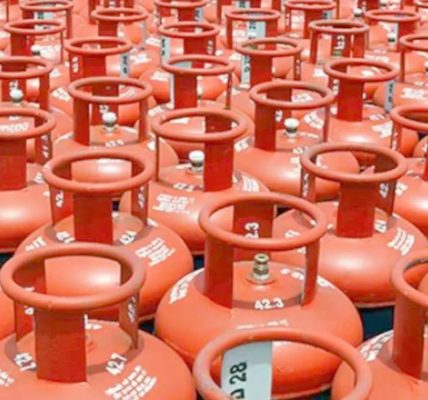In today’s fast-paced retail environment, staying competitive requires more than just stocking the right products. A modern Point of Sale (POS) system is essential for enhancing your local store’s sales and providing an exceptional customer experience. This article explores the myriad ways a contemporary POS system can transform your business operations and drive sales growth.
What is a Modern POS System?
A modern POS System is a combination of hardware and software designed to streamline sales transactions and manage various business operations. Unlike traditional cash registers, modern POS systems offer advanced features such as inventory management, customer relationship management (CRM), sales analytics, and integration with e-commerce platforms. These features not only simplify the checkout process but also provide valuable insights into your business performance.
Key Features of a Modern POS System
1. Enhanced Inventory Management
Effective inventory management is crucial for minimizing costs and maximizing sales. Modern POS systems provide real-time inventory tracking, which helps you:
-
Reduce Stockouts: Automated alerts notify you when stock levels are low, ensuring you never run out of popular items.
-
Optimize Stock Levels: Detailed sales reports help you identify slow-moving products and adjust your inventory accordingly.
-
Simplify Reordering: Integration with suppliers allows for automatic reordering, reducing the time spent on manual stock management.
2. Improved Customer Experience
A seamless and efficient checkout process is vital for customer satisfaction. Modern POS systems offer:
-
Faster Transactions: Quick and easy transactions reduce waiting times and improve the overall shopping experience.
-
Multiple Payment Options: Accepting various payment methods, including credit/debit cards, mobile payments, and contactless payments, caters to diverse customer preferences.
-
Loyalty Programs: Integrated loyalty programs reward repeat customers, fostering loyalty and encouraging repeat business.
3. Comprehensive Sales Analytics
Understanding your sales data is key to making informed business decisions. Modern POS systems provide:
-
Detailed Sales Reports: Track sales trends, peak shopping times, and best-selling products to make data-driven decisions.
-
Employee Performance Metrics: Monitor staff performance to identify top performers and areas needing improvement.
-
Customer Insights: Analyze customer purchase history to tailor marketing strategies and improve customer retention.
4. Seamless Integration with E-commerce Platforms
In the digital age, having an online presence is essential for reaching a broader audience. Modern POS systems integrate seamlessly with e-commerce platforms, allowing you to:
-
Synchronize Inventory: Ensure consistent stock levels across online and offline channels, preventing overselling.
-
Manage Orders Efficiently: Process online orders through the same system used for in-store sales, streamlining operations.
-
Expand Customer Reach: Sell to customers beyond your local area, boosting overall sales.
5. Enhanced Security Features
Protecting sensitive customer and business data is a top priority. Modern POS systems offer:
-
Secure Payment Processing: Adherence to PCI DSS standards ensures safe handling of card transactions.
-
Data Encryption: Encrypts sensitive information, safeguarding it from unauthorized access.
-
User Access Controls: Restrict access to critical system functions, reducing the risk of internal fraud.
How a Modern POS System Can Boost Your Sales
Streamlining Operations
A modern POS system automates various routine tasks, freeing up your staff to focus on customer service and sales. This efficiency leads to:
-
Reduced Operational Costs: Automation reduces the need for manual labor, lowering overall operational costs.
-
Improved Staff Productivity: With less time spent on administrative tasks, staff can engage more with customers and drive sales.
Personalized Customer Engagement
With access to detailed customer data, you can personalize interactions and marketing efforts. Modern POS systems enable:
-
Targeted Promotions: Use purchase history and customer preferences to create tailored promotions that resonate with your audience.
-
Enhanced Customer Relationships: Track customer interactions to provide personalized service, increasing customer satisfaction and loyalty.
Optimizing Sales Strategies
Sales data and analytics provide valuable insights into your business, allowing you to:
-
Identify Sales Trends: Understand what products are popular and when, helping you plan inventory and promotions effectively.
-
Adjust Pricing Strategies: Use sales data to implement dynamic pricing, optimizing profit margins and competitiveness.
-
Forecast Demand: Predict future sales trends to prepare for peak periods, ensuring you have adequate stock and staffing.
Choosing the Right POS System for Your Business
Selecting the right POS system depends on your specific business needs. Consider the following factors:
-
Scalability: Choose a system that can grow with your business, offering additional features and capabilities as needed.
-
User-Friendliness: Ensure the system is intuitive and easy to use, minimizing training time for staff.
-
Support and Maintenance: Opt for a provider that offers reliable customer support and regular system updates.
Implementing a Modern POS System
Planning and Preparation
Before implementing a new POS system, thorough planning is essential. Key steps include:
-
Assessing Business Needs: Identify the specific features and functionalities your business requires.
-
Budgeting: Determine your budget for both initial setup and ongoing costs.
-
Researching Providers: Compare different POS providers based on features, pricing, and customer reviews.
Installation and Training
Proper installation and training are critical for a smooth transition. Ensure you:
-
Work with Professionals: Hire experts for system installation to avoid technical issues.
-
Train Your Staff: Provide comprehensive training to ensure your staff can effectively use the new system.
Monitoring and Optimization
Once the POS system is in place, continuous monitoring and optimization are necessary. Regularly:
-
Review Sales Data: Analyze sales reports to identify areas for improvement.
-
Update the System: Keep the system updated to benefit from new features and security enhancements.
-
Gather Feedback: Collect feedback from staff and customers to make necessary adjustments.
Conclusion
A modern POS system is a powerful tool that can significantly enhance your local store’s sales and overall efficiency. By streamlining operations, improving customer experience, and providing valuable sales insights, a contemporary POS system is an investment that pays off in both the short and long term.





